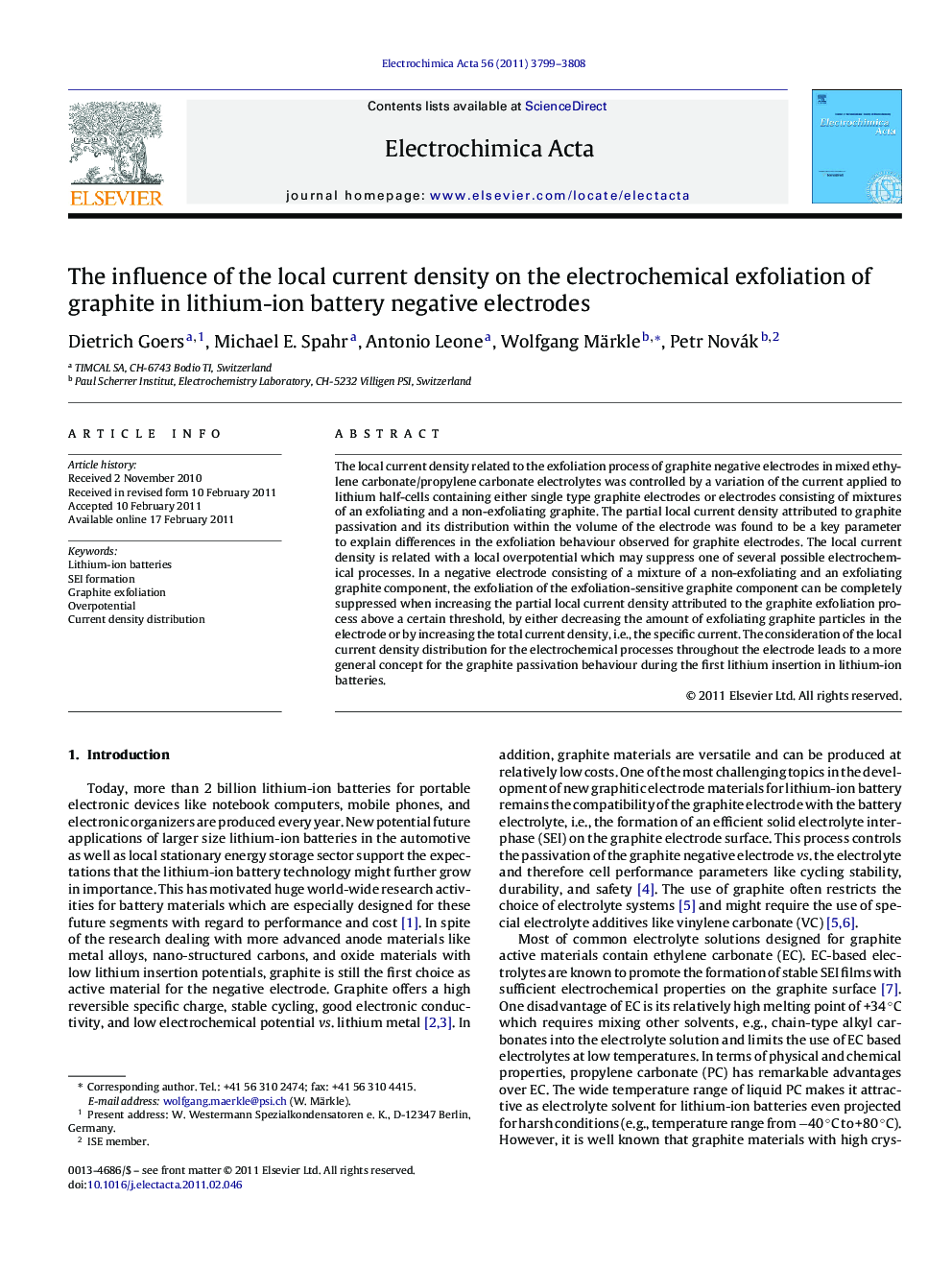| Article ID | Journal | Published Year | Pages | File Type |
|---|---|---|---|---|
| 190229 | Electrochimica Acta | 2011 | 10 Pages |
The local current density related to the exfoliation process of graphite negative electrodes in mixed ethylene carbonate/propylene carbonate electrolytes was controlled by a variation of the current applied to lithium half-cells containing either single type graphite electrodes or electrodes consisting of mixtures of an exfoliating and a non-exfoliating graphite. The partial local current density attributed to graphite passivation and its distribution within the volume of the electrode was found to be a key parameter to explain differences in the exfoliation behaviour observed for graphite electrodes. The local current density is related with a local overpotential which may suppress one of several possible electrochemical processes. In a negative electrode consisting of a mixture of a non-exfoliating and an exfoliating graphite component, the exfoliation of the exfoliation-sensitive graphite component can be completely suppressed when increasing the partial local current density attributed to the graphite exfoliation process above a certain threshold, by either decreasing the amount of exfoliating graphite particles in the electrode or by increasing the total current density, i.e., the specific current. The consideration of the local current density distribution for the electrochemical processes throughout the electrode leads to a more general concept for the graphite passivation behaviour during the first lithium insertion in lithium-ion batteries.
Research highlights► Local density distribution through an electrode controls passivation behaviour. ► The local density distribution can be influenced by a multi-component electrode. ► Exfoliation can be suppressed by exceeding a certain local current density.
